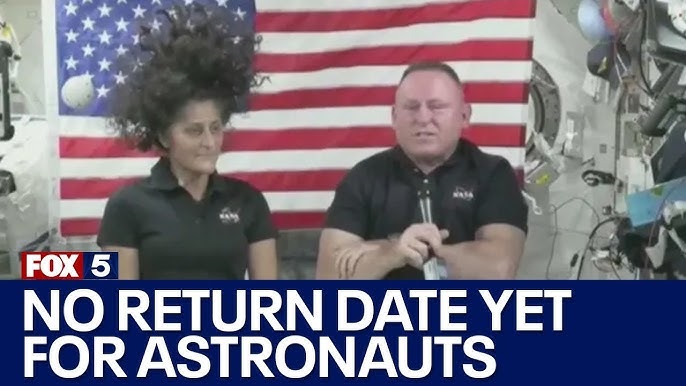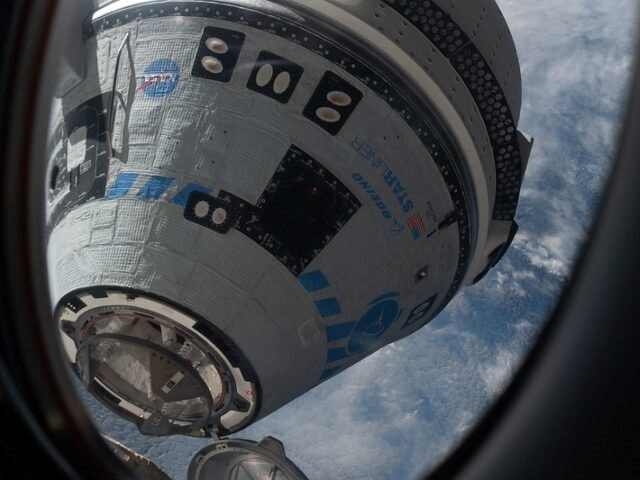
Two astronauts, Suni Williams and Butch Wilmore (photo), arrived at the International Space Station on June 6, expecting to stay for just over a week. Now they won’t be heading back to earth until February. Their ride was on the Boeing Starliner spacecraft, now deemed by NASA to be too risky for the return trip thanks to a host of troublesome technical glitches, writes ‘The New York Times’.
NASA spin doctors object to headlines declaring that the astronauts are “stranded” or “stuck” in space, pointing out correctly that they are not in jeopardy.
But make no mistake: this is a fiasco. And not just because of the strain it puts on Ms. Williams and Mr. Wilmore and their families. Boeing’s engineering woes extend beyond Starliner — they threaten NASA’s bigger goals of going back to the moon through its Artemis program, for which Boeing has become an essential partner. I was told that a number of retired astronauts are increasingly troubled by Boeing’s performance. This loss in confidence helps put the entire Artemis program into a new state of uncertainty.
Consider the fact that on Aug. 7, Steve Stich, the manager for NASA’s commercial crew program, used the term “multiple failure” to describe the possible concerns he and his team were contemplating about the spacecraft’s propulsion system.
In the lexicon of aerospace safety regimes, the possibility of “multiple failure” is as bad as it gets. It was enough for NASA to switch the return flight for Ms. Williams and Mr. Wilmore to early next year aboard one of Elon Musk’s SpaceX missions.
The underlying issue here has to be extricated from prolix engineer-speak. Safety and Boeing were once synonymous. As jet flight became an everyday experience for millions of people, the word was “If it ain’t Boeing, I ain’t going.”
For Boeing engineers who worked on commercial jets from the 707 to the 747 “jumbo,” the bedrock of their craft was safety. They were simultaneously innovators and risk-averse watchdogs. They educated federal regulators on how to build backup systems into a design to avoid structural failures and, over many decades, how to lessen the chance of human errors in the cockpit. In that process the engineers’ safety ethic also became a baked-in corporate ethic, a companywide culture from the mechanics on the assembly line to the executive suite and the supervising board of directors.
The turning point came in 1997, with a merger of Boeing and McDonnell Douglas. This made sense in terms of sheer scale, particularly by consolidating the defense contracting arms of the two. It also satisfied stockholders and Wall Street who thought Boeing’s romance with building jets distracted it too much from making profits.
However, successfully reconciling the two demands, peerless engineering excellence and brisker quarterly earnings, proved elusive. Bean counters prevailed. Many critics began to say that McDonnell Douglas had taken over Boeing, and that safety had been compromised by relentless cost-cutting. Nobody cared much until two crashes of a new version of the company’s best-selling jet, the 737 MAX, in 2018 and 2019, killed 346 people, a tragedy that peeled away all claims to engineering integrity.
Last month, Boeing agreed to plead guilty to a federal charge of conspiring to defraud the government in connection with those crashes. As part of that deal, Boeing agreed to pay more than $450 million to strengthen its compliance and safety programs. All divisions of Boeing — commercial aviation, defense and aerospace — are plagued with failures to meet budgets, delivery dates and promised performance.
In the past decade Boeing executives have used the term “moonshot” to disparage what they regarded as overly ambitious projects driven by the “can-do” spirit of the 1960s. But NASA’s Artemis program, aiming to return to the moon by 2026, depends critically on the Space Launch System, a massive launch rocket developed largely by Boeing.
That was successfully tested in 2022 when NASA launched an unmanned spacecraft into a lunar orbit. But it emerged in a report this month that NASA’s Office of Inspector General has serious concerns about Boeing’s work on an upgrade of the rocket.
Boeing, the report noted, has failed to meet international standards, and is exhibiting quality control faults “largely due to the lack of a sufficient number of trained and experienced aerospace workers at Boeing.” NASA adopted the report’s recommendation to coordinate with Boeing to institute a quality management training program. The cost of the upgrade has ballooned to nearly $2.8 billion through 2028 from $962 million.
Unfortunately it seems NASA has no choice but to stick with Boeing. The Space Launch System is a product of politics — of elected officials to direct government contracts toward vested interests. NASA must use the Space Launch System to go to the moon. And therefore the fate of the moonshot is inextricably tied to Boeing’s performance.
There is the fear things may only get worse, even after this latest humiliation to Boeing’s reputation, NYT concludes.
 The troubled Boeing Starliner capsule.
The troubled Boeing Starliner capsule.
Photo: NASA
Futurism reports that the Boeing Starliner spacecraft, once touted as a critical component of NASA’s Commercial Crew program, is now facing the possibility of cancellation due to a series of technical mishaps, supply chain issues, and years of delays. The troubled capsule is returning empty-handed from its latest mission, with NASA astronauts Butch Wilmore and Suni Williams planning to catch a ride back to Earth on SpaceX’s Crew Dragon instead, notes Breitbart.
The decision to abandon Starliner mid-mission is a significant blow to Boeing, which has been battling with the spacecraft’s development for years. Since 2016, the project has exceeded its budget by a staggering $1.6 billion, according to a report by Reuters. This latest setback has raised doubts among analysts and industry experts about whether Starliner will ever fly again.
The failure of Starliner’s first crewed test flight has denied NASA the confidence it needed to certify the spacecraft for regular crew rotation missions to the International Space Station. The space agency had hoped that Starliner would provide redundancy in case SpaceX’s Crew Dragon experienced any issues. Instead, persistent gas leaks and thruster problems have cast doubt on the spacecraft’s reliability.
Analysts have suggested that Boeing may ultimately exit the Commercial Crew program due to its complexity and the superior performance of its competitor, SpaceX. Melius Research analyst Robert Spingarn told Bloomberg, “Do they ultimately exit the program because it’s too complicated and because the other guy can do it better? It can happen.”
read more in our Telegram-channel https://t.me/The_International_Affairs

 10:30 31.08.2024 •
10:30 31.08.2024 •






















